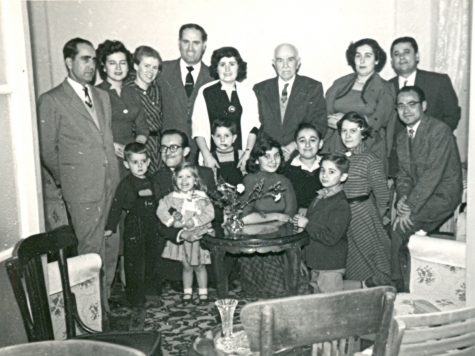Dincer expresses Turkish-American intersectionality
Dincer reflects on his culture, shapes perception
Sophomore Ethan Dincer describes his Turkish-American identity as being able to view issues from both his American identity and his Turkish identity. “Being Turkish-American means that I have a different viewpoint and knowledge of somewhere else in the world, because I was brought up with that culture,” Dincer said.
Living in a country with a wide array of ethnic identities, it is crucial to foster coexistence and tolerance. Among the lower half of the ethnic identity range lies Turkish- Americans. According to the United States Census Bureau, 117,575 claim to be of Turkish descent. In addition to this vast spectrum of ethnic identities, the value of identifying within the parameter differs from person to person.
For sophomore Ethan Dincer, being Turkish-American gives him the opportunity to perceive his surrounding environment through the lens of someone who is Turkish and someone who is American. Both Dincer’s parents possess Turkish heritage, and the traditions they have practiced have seamlessly passed down to Dincer. With implications for a diverse perspective, Dincer appreciates how his culture allows him to understand contrasting sides to different stories.
“Being Turkish-American means that I have a different viewpoint and knowledge of somewhere else in the world because I was brought up with that culture. I guess that makes me see the world differently, I get to see both sides given that I am both Turkish and American,” Dincer said.
“When topics come up relating to the Middle East and Turkey I have almost an insider’s perspective on it. I get to have a different opinion about it too because I can see both sides of the story. I’m not just American and I’m not just Turkish which helps me not be bias,” Dincer said.
Hospitality, a devout honor given to elders, and unique cultural characteristics all seemingly contribute to Dincer’s perception and appreciation of his Turkish identity. For Dincer, it is not one specific tradition he values the most, but it is the combination of each complex and at times particular practices that define his culture.
“There aren’t that many huge traditions that my family practices, but themes such as hospitality play a huge role, and some of the games that we play[align with the culture]. For example, to respect elders you kiss their hand and then you touch it to your forehead to show respect. Hand gestures, different quirky movements are all things I do with my family. These quirks I only really practice around my family because I don’t really have anyone else that I am close with[who is Turkish],” Dincer said.
Given that Turkish-Americans are small in numbers, particularly within Dincer’s community, it is often difficult for others to comprehend the complexities that contrive and influence Dincer’s identity. Americans who are not familiar with Turkish beliefs and practices easily conceive assumptions that Dincer continually strives to knock down.
“It [being Turkish] has been difficult at times because I don’t look Turkish and many Americans have a different perception as to what Turkish people look like. It’s harder for people to believe me when I tell them I’m Turkish. It’s harder for them to believe me because they have a different conception of what Turkish people look like. Many Turkish immigrants [in America] try to shy away from Turkish culture a little bit and assimilate into American culture, so I have more of a disconnect there. It’s mostly been difficult in terms of my looks. [It’s somewhat difficult to explain Turkish culture because] many people perceive Turkey to be more of a Muslim country than it is. It is, about 99% of the population in Turkey is Muslim, but it’s also secular. There’s still a difference in people,” Dincer said.

Regardless of its challenges, Dincer still attributes much of his personality stemming from Turkish traditions he practices within his house.
“Being really friendly and having a huge sense of a community has influenced me because of my Turkish culture,” Dincer said.
In pursuit to immerse himself even more into Turkish culture, Dincer plans to visit Turkey this upcoming summer. He is still unsure of an organization he wishes to travel with, but his incentive is distinct: assisting others.
“Helping Syrian refugees fit in Turkish culture, teaching children Turkish or English, helping children who are disabled go about life because in Turkey there’s not a huge act to help disabled people are all things I would like to be involved with,” Dincer said.
Barriers within people’s identities pose a threat to the authenticity of a person’s inimitable identity. What Dincer displays so eloquently, is the integration and intersection between his two identities, meshing and forming one that establishes his individual self. This notion of constructing a singular and pure identity is one of great importance and of expressive nature.
“My identity doesn’t change because the fundamental ideas [in each culture] are similar,” Dincer said.
Mimi Geller is the Director of RubicOnline. This is her fourth year on staff. Mimi believes that high school journalism connects people by sharing their...
Ethan Dincer is the Photojournalist at RubicOnline. This is his second year taking photos for RubicOnline. Ethan affirms the importance of visual aid...